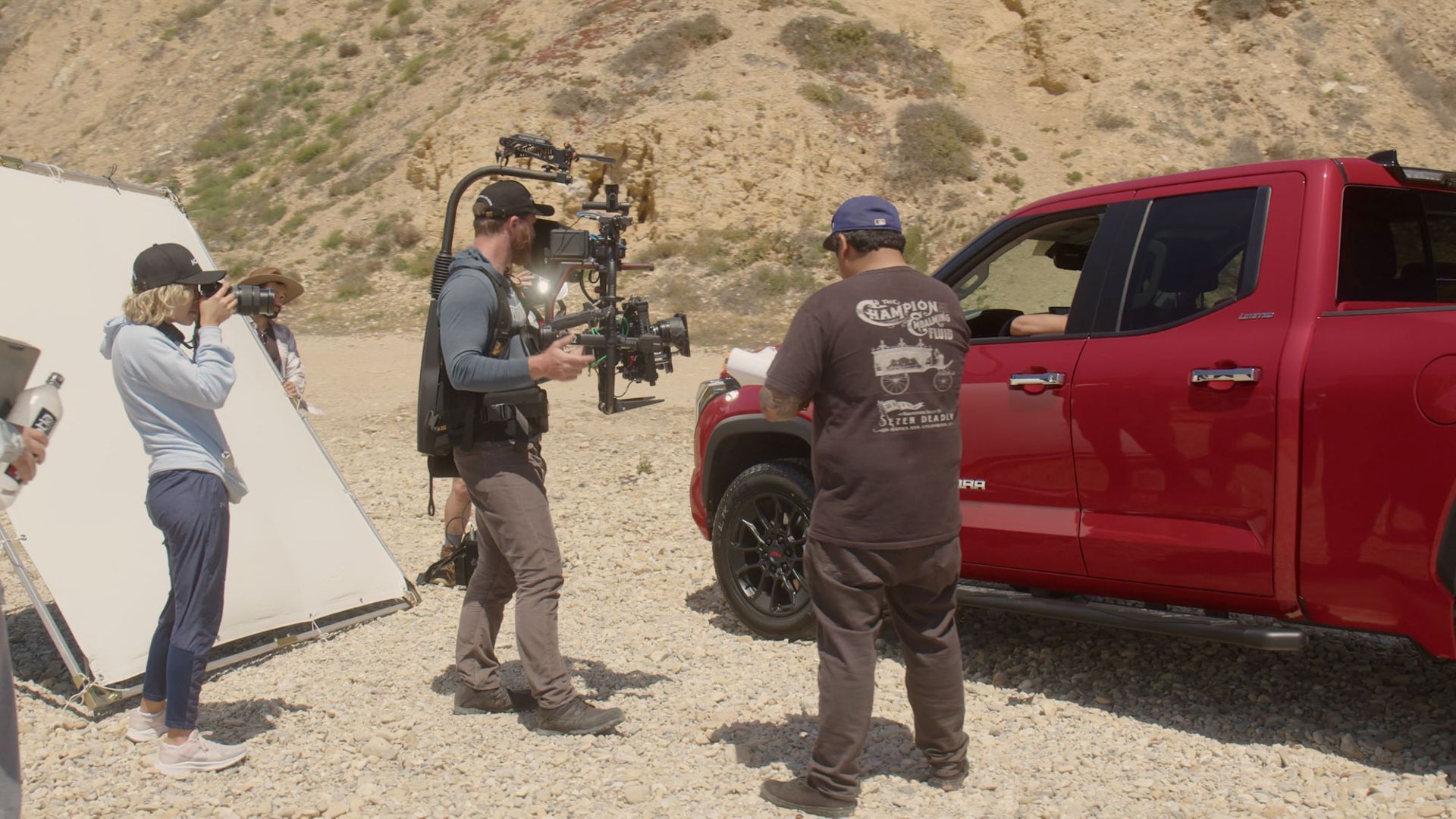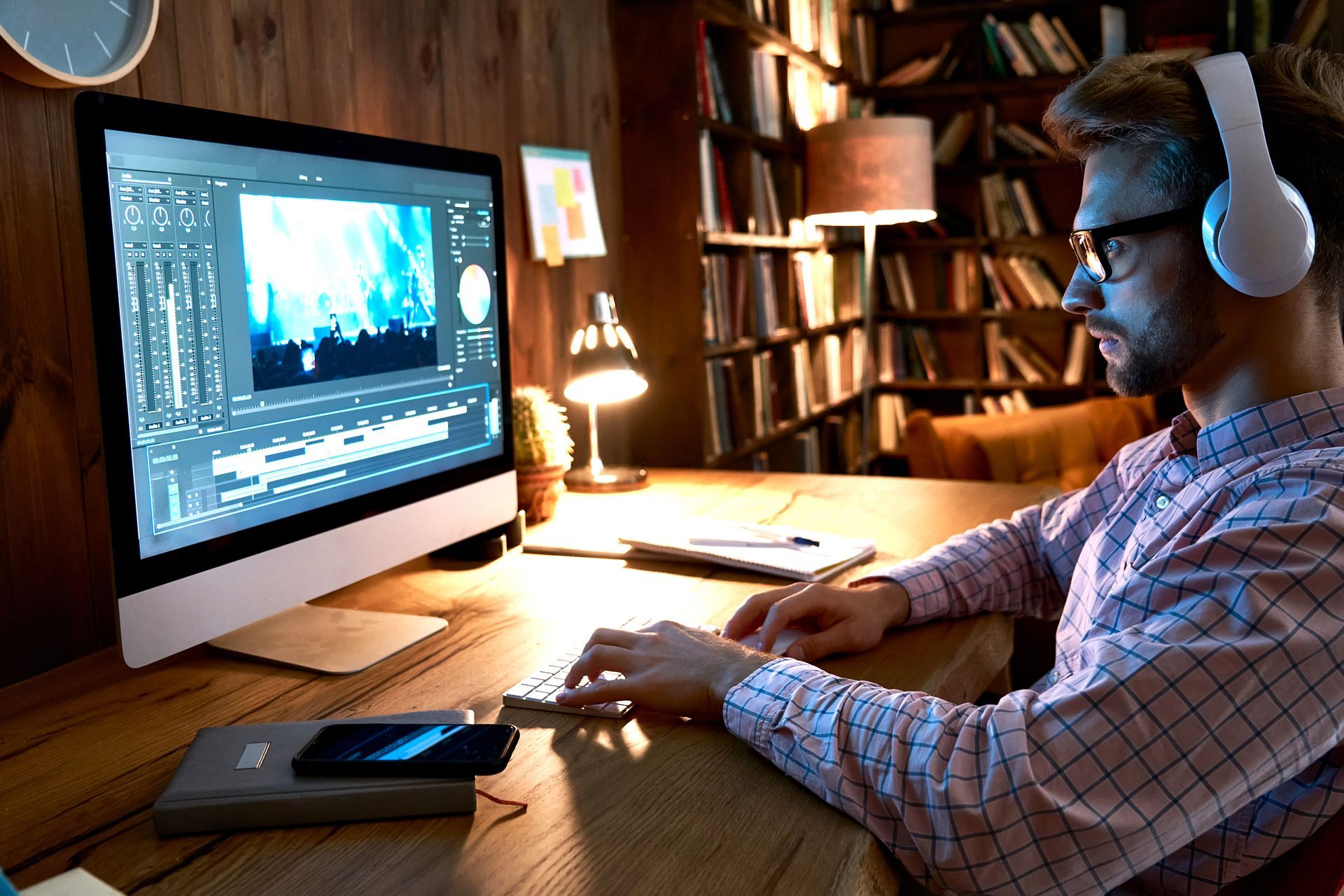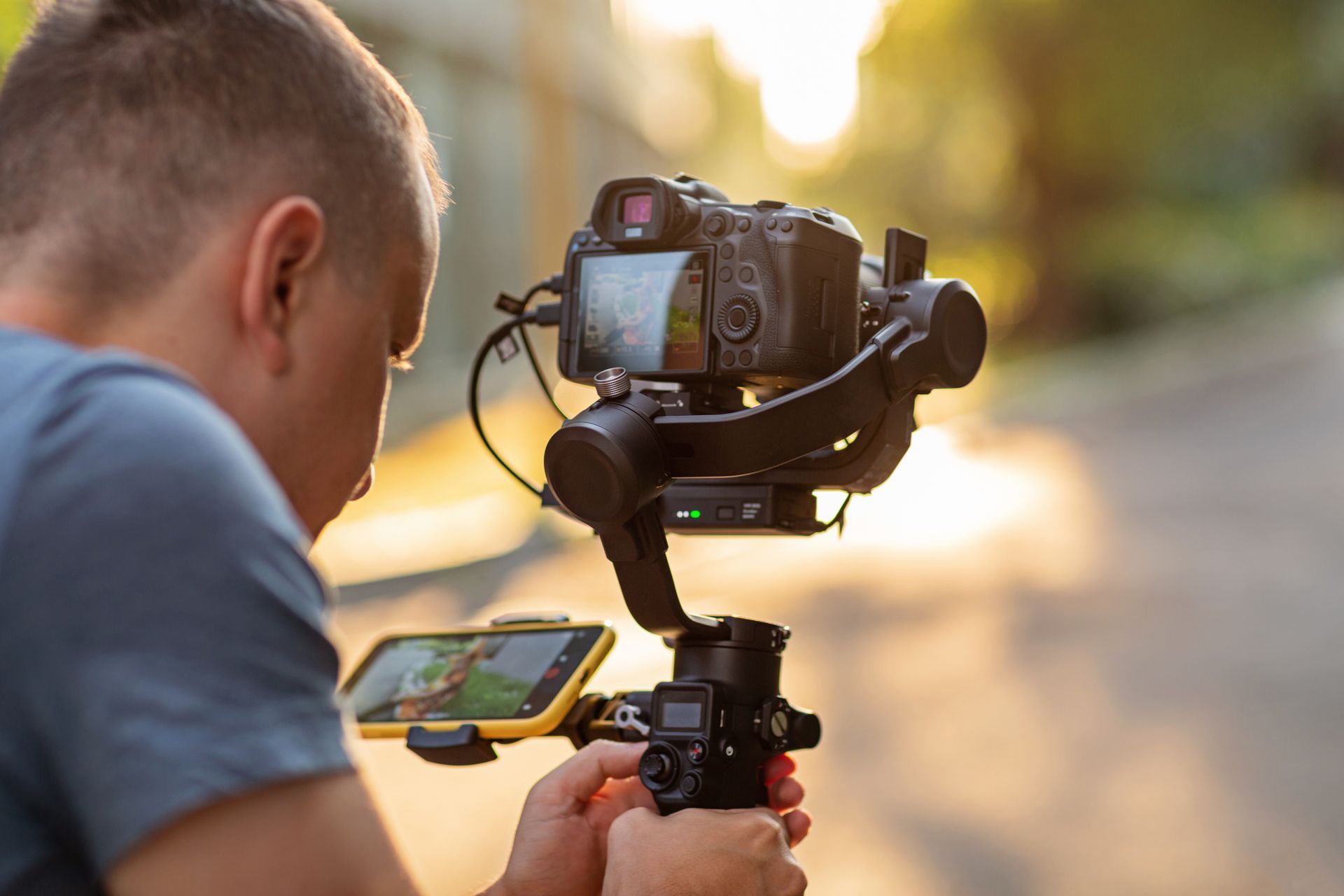
Real estate videos. You've seen them, haven't you? They're everywhere on websites, social media, or emails. They have a job to do. That job is to sell properties.
The Purpose of Real Estate Videos
What's the purpose of these videos? Simple. It's to show the property. But it goes deeper than that. Videotapes are made to impress, amaze and inspire people to say, "I want to live there." So they must be high quality. They must stand out.
The video's purpose is to sell the dream. A dream of a new home. A new life. A new opportunity.
The Importance of Quality in Real Estate Videos
Quality matters. It matters a lot. High-quality videos attract attention. They are memorable. They help buyers make a decision. Poor quality? It does the opposite. It can even harm a property's image. So, we need to make our videos the best they can be.
Overview of the Content
What are we going to learn? We'll start with understanding the audience. Who are they? What do they want? Next, we'll prepare. We'll plan our video. We'll choose our equipment.
Then comes the production stage. We'll learn how to shoot. How to capture sound. We'll follow that with editing. We'll make our video shine. We'll add sound. Music. Titles.
Finally, we'll learn about SEO, Social media, Email marketing, and legalities surrounding video marketing.
Understanding Your Target Audience
Who are Your Potential Buyers?
To make a great video, you need to know your audience. Who will watch your video? Who wants to buy the property? Families? Young professionals? Retirees? Your video needs to appeal to them.
The Role of Demographics and Lifestyle
Think about your potential buyers. What is their lifestyle? What is their income? Are they city dwellers? Or do they prefer the countryside? These factors matter. They should guide your video.
If your buyers are families, highlight the local schools. Show the spacious backyard. If your buyers are young professionals, show them the modern kitchen. Highlight the nearby cafes and gyms.
Tailoring the Video Content to Fit the Audience
Your video should match your audience. It should show them what they want to see. It should make them say, "This is the home for me."
If the property is a country home, highlight the peace. Show the surrounding nature. If it's a city apartment, show the bustling city. Highlight the nearby amenities.
Your video should speak to your audience. It should make them feel at home. It should make them want to buy. So, know your audience. Understand them. Please make a video that appeals to them. This is the key to creating an excellent real estate video.

Pre-Production
Pre-production is crucial. It's where you plan. It's where you make vital decisions. It can make or break your video.
Conceptualization
This is the planning stage. It's where you choose what to show. And how to show it.
Identifying the Key Features of the Property
Start with the property. What are its best features? A pool? A stunning view? A gourmet kitchen? Highlight them. Make them stand out. They're what makes your property unique.
Storyboarding
Next, storyboard. Draw the scenes. Plan the shots. This helps you visualize the video. It ensures you don't forget anything.
Scriptwriting
Then, write a script. This guides your video. It outlines what to say and when to say it.

Equipment Selection
Choosing the right equipment is crucial. It determines the quality of your video.
Cameras
Choose a good camera. It doesn't have to be expensive. But it needs to record high-quality video.
Drones for Aerial Shots
Drones give you a bird's eye view. They can capture the property and its surroundings. They can show off a large estate. Or a home's proximity to the beach.
Stabilizers/Gimbals
These keep your camera steady. They make your video smooth—no shaky shots.
Lighting Equipment
Lighting is key. It sets the mood. It highlights the property's best features.
Sound Equipment
Sound matters, too. It adds depth to your video. A good microphone is essential.
Location Scouting
Scout the location. Visit the property. Get a feel for it.
Best Times to Shoot
Timing matters. Early morning light can be stunning. Twilight can be magical. Choose the best time to show off the property.
Identifying Best Angles and Perspectives
Every property has its best angles. Find them. Use them. They'll make your video shine.
Pre-production is work. But it's worth it. It sets the stage for a great video. It helps you avoid problems, and it ensures your video stands out.
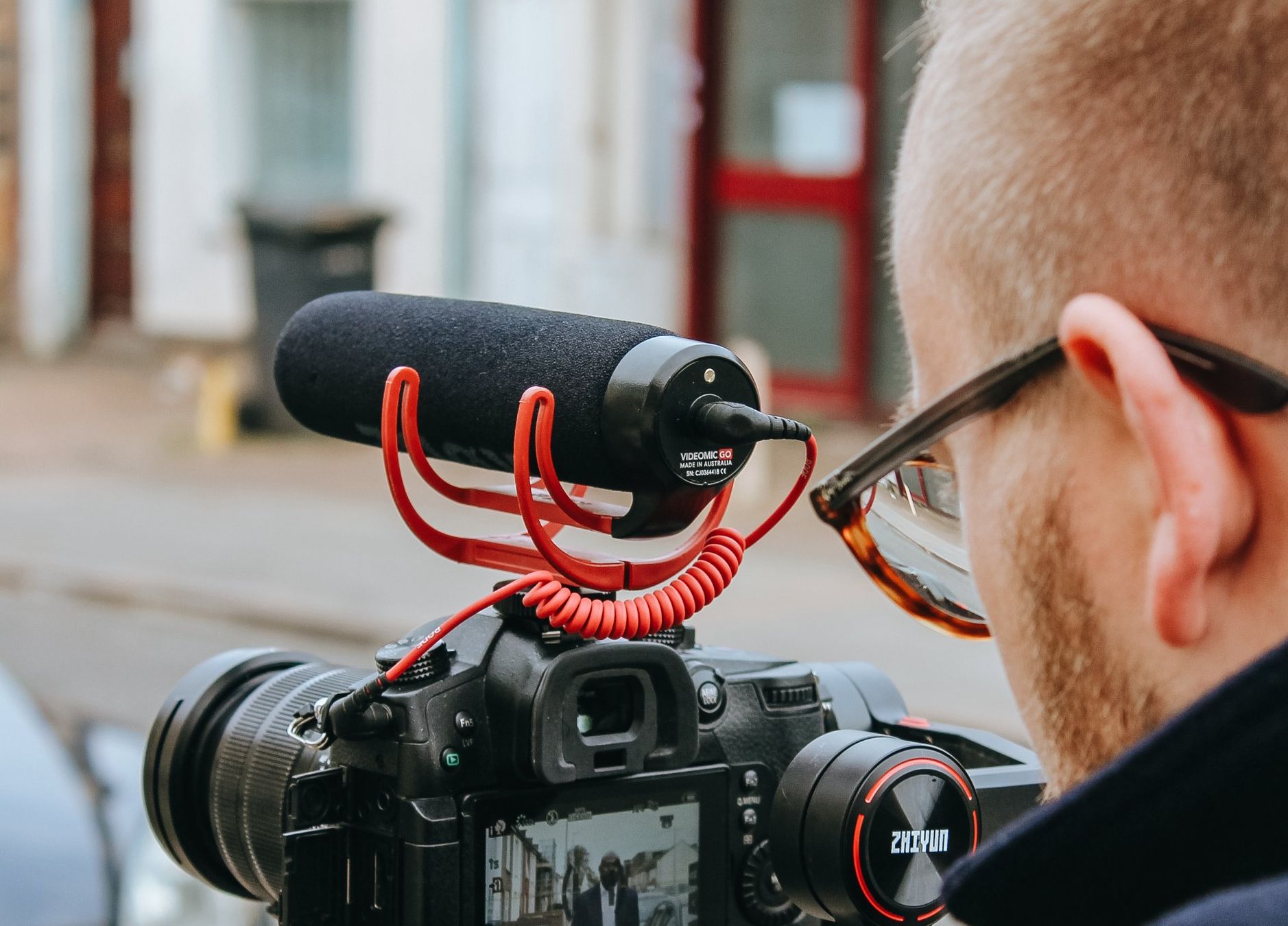
Production
Production. This is where the magic happens. This is where you capture your shots.
Setting Up Shots
Setting up your shots is crucial. You need to capture the property in the best light.
Wide Shots
Wide shots are important. They show the whole property. They give viewers a sense of space. Use them to showcase large rooms or the exterior of the house.
Detail Shots
Don't forget the details. A close-up of a granite countertop. A shot of a high-end appliance. Detail shots add depth to your video. They highlight the property's features.
Aerial Shots
Aerial shots offer a different perspective. They can show the size of the property. Or its location in the neighborhood. Use a drone for these shots.
Filming Techniques
How you film matters. It can affect the quality of your video.
Smooth Camera Movements
Smooth movements are essential. No sudden jerks. No shaky shots. Use a stabilizer or gimbal for this.
Maintaining Consistency in Lighting
Keep your lighting consistent. This can be tricky. The sun can change your lighting. But try to keep it steady. It makes your video look professional.
Audio Recording
Sound adds depth to your video. It makes it more engaging.
Capturing Ambient Sounds
Capture the sounds of the property. The chirping of birds. The sound of a nearby stream. These add a sense of realism to your video.
Voice-over Techniques
A voice-over can guide your viewers. It can point out features. It can tell the story of the property. Keep your voice clear. Keep it steady.
Production can be challenging. But it's also exciting. It's where you bring your vision to life. It's where you create your amazing real estate video.
Post-Production
Post-production. This is where you polish your video. It's where you make it shine.

Video Editing
Editing is crucial. It turns your footage into a video.
Selection of Shots
Start by choosing your shots. Pick the best ones. The ones that show off the property.
Transitions and Effects
Add transitions. They link your shots together. They make your video flow.
Effects can enhance your video. They can add style. But use them sparingly. Please don't overdo it.
Color Grading
Color grading changes the look of your video. It can make it warmer. Or cooler. It can make it more vibrant or more muted. It sets the mood of your video.
Audio Editing
Sound editing is just as important. It enhances your video.
Sound Mixing
Mix your sounds. Combine your voice-over with ambient sounds. Add music but make sure it's balanced. No sound should overpower the others.
Voice-over Editing
Edit your voice-over. Remove any mistakes
and make sure it matches your video.
Adding Music and Sound Effects
Music sets the tone. It can make your video feel upbeat or relaxed. Choose music that fits your property.
Sound effects can add depth. They can make your video more engaging. But like effects, don't overdo it.
Text and Graphics
Text and graphics can enhance your video. They can highlight features. They can guide your viewers.
Introducing Titles and Captions
Titles and captions add information. They can highlight a property's features and give details about the location.
Branding Elements
Include your brand, your logo, and contact information. Make it easy for viewers to reach you.
Call to Action
End with a call to action. Encourage viewers to contact you, visit your website and learn more about the property.
Post-production takes time. It requires attention to detail. But it's worth it and turns your footage into a high-quality real estate video.
Real Estate Video Marketing
Real estate video marketing is a strategic approach to using video content to attract, engage, and convert potential buyers. It's more than just creating and sharing videos; it's about crafting compelling narratives, reaching the right people, and measuring your success.
Content Strategy
Videos for Different Buyer Stages
Your video content should cater to potential buyers at different stages of the buying process.
Awareness Stage
At this stage, potential buyers are just starting their search. Videos that showcase the neighborhood, local amenities, and lifestyle can help attract their attention.
Consideration Stage
In the consideration stage, buyers compare different properties. Detailed property tour videos and testimonials can provide valuable information to help them decide.
Decision Stage
For buyers ready to decide, personalized video messages or a live video walk-through can provide that final push.
Video SEO
Video SEO ensures your videos are discoverable by search engines. Use relevant keywords in your video titles, descriptions, and tags. Create engaging video thumbnails to increase click-through rates. Add captions or transcripts to make your videos accessible to a broader audience.
Social Media Marketing
Social media platforms offer powerful ways to reach your audience.
Facebook is great for sharing property tour videos and live broadcasts. You can also use Facebook Ads to target specific demographics.
Instagram is ideal for short, visually compelling videos. Use Instagram Stories for time-sensitive content like open houses. Instagram Reels is a great way to create punchier and entertaining videos, like nice property tours.
YouTube
YouTube is a major search engine in itself. Use it to host various video content, from property tours to advice for home buyers.
TikTok for Real Estate Video Marketing
TikTok is a rapidly growing social media platform known for its short, engaging videos. It's a powerful real estate video marketing tool for reaching younger audiences.
Reach a Younger Audience
TikTok has a large user base of younger individuals. TikTok can be an excellent platform for real estate agents targeting first-time home buyers or younger demographics.
Showcase Properties Creatively
TikTok's focus on short, engaging video content pushes real estate professionals to be creative. Showcase properties with quick tours, before-and-after renovation videos, or day-in-the-life videos highlighting the lifestyle property can offer.
Utilize TikTok Trends
TikTok is known for its trends. By jumping on trending sounds, songs, or video styles, real estate agents can boost the visibility of their content.
Engage with Your Community
TikTok also offers an opportunity to engage with potential buyers directly. Respond to comments on your videos, or create new content based on user questions or requests.
Boosting Organic Reach
TikTok's algorithm can push content to a broad audience, even those who don't follow your account. This allows for a higher organic reach compared to other social media platforms.
TikTok is a virtual real estate video marketing platform offering a unique way to reach and engage with potential buyers. However, like any social platform, the key is creating engaging, valuable content that resonates with your target audience.
Email Marketing
Embedding videos in your emails can boost engagement rates. Use video content to nurture relationships with potential buyers, such as sending personalized property recommendations.
Measuring Success
It's essential to track your video marketing performance. Monitor views, likes, shares, and comments to understand audience engagement. Use Google Analytics to track traffic to your website from your videos. Tools like YouTube Analytics can provide more in-depth insights into viewer behavior.
Remember, real estate video marketing aims to create and share videos, engage potential buyers, and sell properties. You can achieve these goals by understanding your audience, creating valuable content, and using effective marketing strategies.
Legal Considerations
When making a video, consider the law. It can affect what you can do and what you can show.
Copyright and Royalty-Free Content
Copyright is a law. It protects original work. Like music. Photos. Videos. You need permission to use these. Or you can use royalty-free content. This is content you can use for free. Or for a one-time fee.
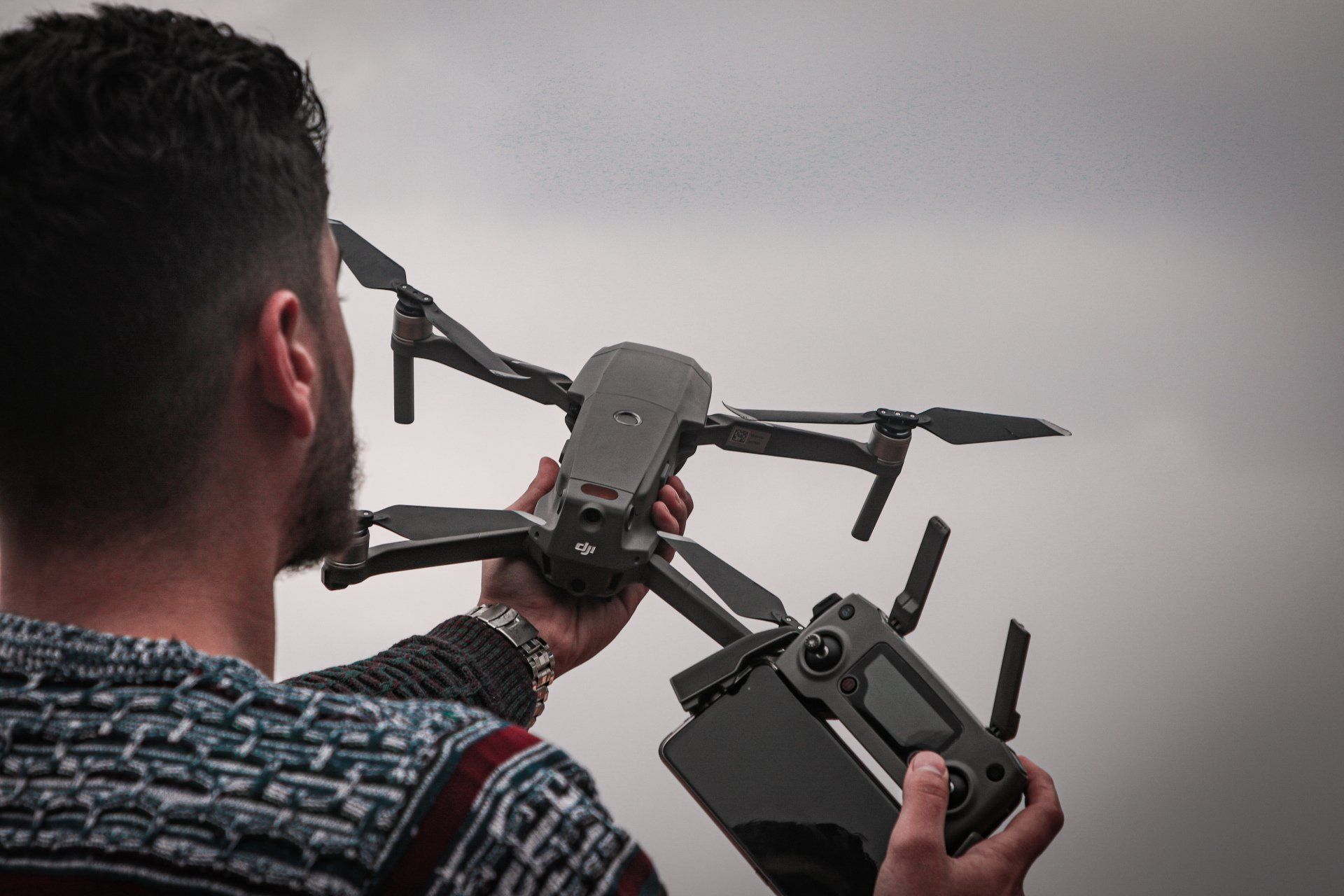
Drone Regulations and Permissions
Drones are useful. They can capture amazing shots. But there are rules. These rules vary by location. Some places require a license to fly a drone. Others have flight restrictions. Check these rules before you fly.
Privacy Considerations
Privacy is important. Don't film people without their permission. Don't show personal items like family photos.
These are just a few legal considerations. They can vary by location or property type. So, do your research or seek legal advice.
Making a real estate video can be complex. But it's worth it. It can showcase a property, attract buyers and make a sale. But always remember, the law matters. Respect it. Follow it. This ensures your video is not just unique but also legal.
Case Studies: Success in Real Estate Video Marketing
Case studies show what works. They highlight success. They offer lessons. Here are two case studies in real estate video marketing.
Case Study 1: John's Real Estate Agency
John's Real Estate Agency is a small firm. They focus on luxury homes. They needed to stand out. So, they turned to video marketing.
Strategy
John's team used drone footage. They showcased their properties. They highlighted luxury features. They also showed the neighborhood—the local amenities.
They used social media. They posted their videos on Facebook and Instagram. They targeted high-income individuals.
Result
John's videos were a hit. They reached over 10,000 views. Their social media followers grew. They attracted more high-end clients, which increased sales by 20%.
Case Study 2: Mary's Property Management
Mary's Property Management manages rental properties. They wanted to attract new tenants, so they used video marketing.
Strategy
Mary's team created property tour videos. They showed each room. They highlighted key features like renovated kitchens and on-site gyms.
They also created neighborhood videos. They showcased local shops, Parks, and Schools.
They shared these videos on their website, YouTube and TikTok. They also used email marketing.
Result
Mary's videos were a success. Their website traffic increased. They received more inquiries, and the vacancy rate dropped. They rented properties faster.
Lessons Learned
John's and Mary's stories show the power of video marketing. It can boost visibility. It can attract clients. It can increase sales or rentals.
Both used social media and showed not just properties but neighborhoods. These strategies worked.
But they also tailored their strategies. John focused on luxury features. Mary highlighted practical details. This shows that understanding your audience is critical.
So, use video marketing. But make it fit your properties. Your clients. That's the path to success.
Final Thoughts on How to Make Real Estate Videos
Making amazing real estate videos is an art. It's a blend of skills. It's understanding your audience, planning your video, capturing great shots, and editing them into stunning videos.
Remember, start with your audience. Who are they? What do they want to see? Plan your video around them.
Then, prepare. Choose your equipment, scout your location, and plan your shots. This is your blueprint; it guides your production.
Next, capture your shots. Be creative, and use wide detailed shots. Make your property look its best.
Then, polish your video. Edit your footage. Add sound. Text. Graphics. This turns your footage into a video.
Distribution and Marketing
Now, share your video. Use SEO, social media, and email marketing. Get your video in front of potential buyers.
Finally, remember the law. Respect copyright. Drone regulations. Privacy.
Final Words
Making real estate videos is a process. It takes time. It takes effort. But the result is worth it. A great video can sell a property. It can impress buyers. It can set you apart from the competition.
Resources and References
Ready to dive deeper? Here are some resources to help you explore real estate video marketing further.
Online Courses
1. Udemy's "Real Estate Video Pro": This course covers all the basics and advanced strategies for creating engaging real estate videos. - https://www.udemy.com/
2. Coursera's "Video Marketing Strategies": Although not specific to real estate, this course offers valuable insights into creating effective video marketing strategies. - https://www.coursera.org/
Blogs and Websites
4. Videomaker.com: A comprehensive site for video production tips, equipment reviews, and post-production techniques - https://www.videomaker.com/
5. Inman.com: An industry-leading real estate news source that frequently covers video marketing trends and strategies - https://www.inman.com/
6. HubSpot's Marketing Blog: Covers a broad spectrum of marketing topics, including video marketing. Their blog posts offer helpful advice on creating, promoting, and optimizing video content.- https://blog.hubspot.com/marketing
Books
7. "YouTube for Real Estate Agents: Learn how to get free real estate leads and never cold call again" by Karin Carr: This book offers practical tips on using YouTube for real estate marketing.
8. "Authors Eric Enge, Stephan Spencer, and Jessie Stricchiola's book "The Art of SEO: Mastering Search Engine Optimization":
While not specific to video, this book offers a deep dive into SEO techniques crucial for making real estate videos more discoverable.
9. "Real Estate Marketing in the 21st Century: Video Marketing for Realtors" by Michael Smythe: This book provides a detailed guide to video marketing specifically for real estate professionals.
These resources offer further guidance and in-depth information on creating and marketing real estate videos. Happy learning!
Recommended Video Equipment and Software
Creating high-quality real estate videos requires reliable equipment and software. Here's a list of recommendations to help you get started.
Video Equipment
- Camera: Canon EOS M50 Mark II - A versatile camera suitable for photography and videography, offering 4K video capabilities.
- Drone: DJI Mavic Air 2 - Perfect for capturing stunning aerial footage of properties and surrounding landscapes.
- Gimbal: DJI Ronin-S - Helps in shooting stable, professional-looking footage, especially for moving shots.
- Tripod: Manfrotto MT055XPRO3 - A sturdy and reliable tripod is essential for static shots and panoramic footage.
- Microphone: Rode VideoMic Pro+ - Ensures clear audio for voice-overs and ambient sounds.
Video Software
- Video Editing: Adobe Premiere Pro - A professional editing tool with powerful features for creating high-quality videos.
- Audio Editing: Audacity - A free, open-source software for recording and editing audio.
- Color Grading: DaVinci Resolve - Offers advanced color grading options to enhance the look and feel of your video.
- Graphics and Animation: Adobe After Effects - Ideal for creating custom animations, title sequences, and special effects.
Image Editing: Adobe Photoshop
- Useful for editing still images for your videos, creating thumbnails, and more.
Remember, while good equipment and software can enhance the quality of your videos, the most important aspect is the content itself. Ensure your videos effectively showcase the property and engage potential buyers.

Get total clarity on your video marketing and paid media with our FREE comprehensive data audit.

